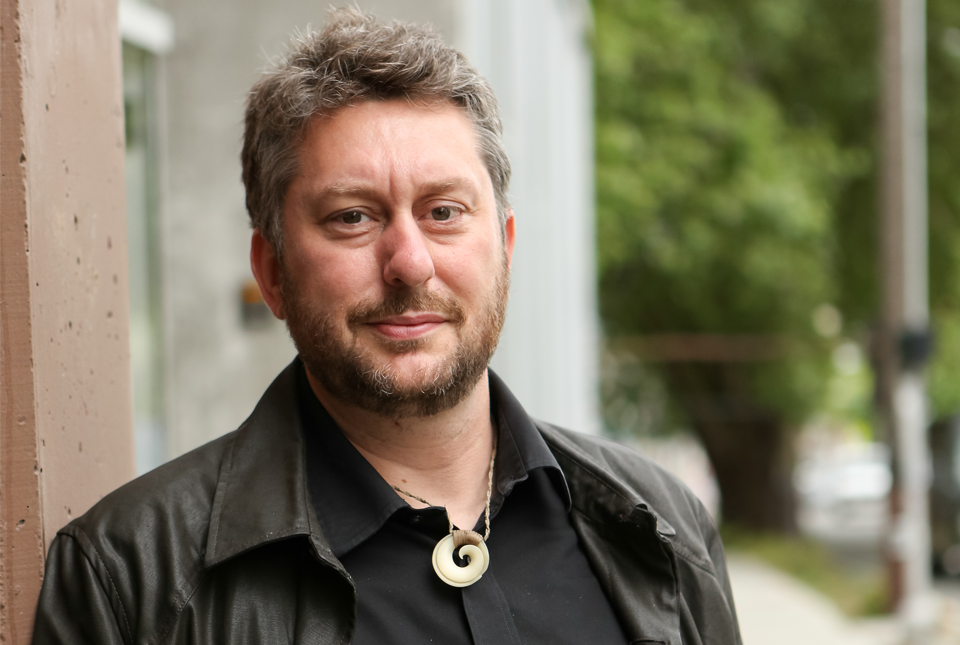Fighting the Flood: Students in Brazil are Building Mobile Bathrooms to Counter Climate Change
The floods that struck São Paulo in early 2015 quickly overwhelmed urban infrastructure, transforming roads into rivers and washing cars away. The region as a whole, however, suffered from severe drought. São Paulo, whose 12 million inhabitants make it the largest city in the Southern Hemisphere, was watching its reservoirs dry up. When the storm abided, the reservoirs were still dry—and the drought continued for months.
Climate change is increasing the frequency and severity of weather events in São Paulo, and many municipalities lack the resources to stave off the worst effects. Moreover, marginalized communities are often hit the hardest: São Paulo’s slums (also known as favelas), neglected by the government for decades, witness a disproportionate amount of destruction when flooding hits. Already lacking infrastructure for water and waste, favelas face increased threats with the accumulation of standing water. Across Brazil, particularly strong storms have displaced entire communities. For millions of citizens in the Global South, the effective mitigation of climate change is a necessity for everyday life.
At the University of São Paulo, a group of architecture students is combatting climate change head-on. Led by Professor Lara Leite Barbosa at the College of Architecture and Urbanism, the students hope to alleviate the effects of flooding by providing stations where citizens can escape high water. Since levees break and river diversion causes untold ecological damage, the students work directly with people where they live rather than modify the landscape. Their solution? Portable bathrooms designed to ship across Brazil when flooding strikes.

Photo Credit: Apis Project
The bathroom scheme, titled Project Apis, is named after the Latin word for bees. “The Apis Project bears this name because its biggest goal is to promote a boon for society that’s carried out in a collaborative way, from its conception to its construction,” says Dr. Barbosa. Her architecture students are not just sitting in classrooms mulling over blueprints, but are venturing out to communities affected by the flooding and assessing human need.
“The inspiration for this project came from my doctoral thesis,” explains Dr. Barbosa. “I studied the relationship between nomadism and sustainability, analyzing projects that combined mobility with thoughtful use of material and energy resources.” She points out that when floods strike, getting people out of flooded areas and into shelter is essential. But shelters quickly become unsanitary if there aren’t bathroom facilities for everyone. Shelters are also difficult to move, and of little use in the face of sudden, sporadic floods. This is where the students’ designs come in.
Dr. Barbosa challenges her students to think outside the box of single-location structures, and simultaneously pushes them to use local materials. Twenty-first-century disaster response in Brazil may yet incorporate ecological, human-centric design—in fact, these elements are necessary to bolster resilience against climate change.
Most government relief programs rely on citizens getting themselves to shelter. In the favelas, though, poor road and nonexistent transportation leave many residents stranded. “The bathrooms can function independently of the existing urban infrastructure,” says Marina Lima Medeiros, a student working on Project Apis. In concept, the bathrooms can be deployed anywhere there is need, circumventing established relief routes and directly reaching citizens.
Each bathroom contains single-sex showers, sinks, toilets, and dressing rooms. Designed to serve around 60 people per day, a single bathroom functions as an independent unit and eliminates the need to connect to municipal water or sewage systems. Therefore, says Dr. Barbosa, the bathrooms “reduce the spread of infectious diseases and other health problems due to lack of public health accommodations.”
Portability is key to the project’s success, so the bathrooms are designed to be compact, fitting into shipping containers for easy transportation. They use built-in hydraulic and electric systems in order to operate away from the grid, so rooftop solar panels heat water and produce electricity. (Energy generators provide backup power.) An “ultrafiltration system” collects water from the flooded area, then cleans the water to make it suitable for use in the showers and toilets.
Producing the bathrooms provides a windfall for the local economy, the students insist. Many materials inside the bathrooms are locally sourced: the partitions between the bathroom stalls are made of banana fiber, as is the exterior paneling. Banana fiber is abundant in São Paulo. “From a sustainability perspective,” explains Dr. Barbosa, “the use of local resources both diminishes the environmental impact of [the bathrooms] and facilitates the acceptance of banana fiber as a building material because it is culturally familiar.” Dr. Barbosa hopes that the more people see structures made of banana fiber, the more they’ll latch on to local, homegrown construction—and demand for the fiber will grow.
The São Paulo students have partnered with several businesses to transform their designs into a functioning reality. Contain[it], a construction company, builds the shipping containers for the bathrooms, while Imperveg—a company that produces polymers—donates leftover resin for the project, which is mixed with the banana fiber for construction purposes. Sociedade do Sol (Society of the Sun) is a local company that donated the solar panels, and another company, Sansuy, helped develop the flexible reservoirs for blackwater and graywater in the bathrooms. A company called Caldeplás, meanwhile, produced the reservoirs for cold water and hot water. If one thing is certain, building bathrooms is a dynamic process that engages whole communities.
Students are working directly with the community of Eldorado, a São Paulo municipality with a population of 15,000. According to The Economist, Eldorado is one of the poorest and most violent of São Paulo’s slums—and the area has been hit by successive flooding year after year. “Despite the fact that these floods have occurred periodically for many years now, it is still very difficult for the government to organize response teams in the aftermath of natural disasters,” notes Dr. Barbosa. “Each time we get a new mayor, we also get new officials, and that brings problems for the continuity of actions in the long term.” The team at Project Apis hopes that once their working models are complete, they can turn over the bathrooms to the Ministry of Civil Defense, which can roll out the emergency units when storms strike urban areas of Brazil.
Project Apis holds profound lessons for community engagement as well as the human response to climate change. When human need is made the central goal of design, architecture becomes a means of service. As these students demonstrate, architects themselves can respond to disaster while regenerating places and communities.
“Architects need to organize together with affected communities to collaborate in multidisciplinary teams,” says Ms. Medeiros. “First and foremost, architects need to listen to the people who are suffering from natural disasters, because many times the local people suggest solutions that are most efficient and appropriate for the areas where these storm events occur, since they live there and know the risk areas very well.”
By listening to local residents, architects’ work becomes more like that of bees: a communal process wherein each individual lends a hand to shape the built environment. Structures, when they emulate hives, provide ample resources for all individuals—not just a select few.


